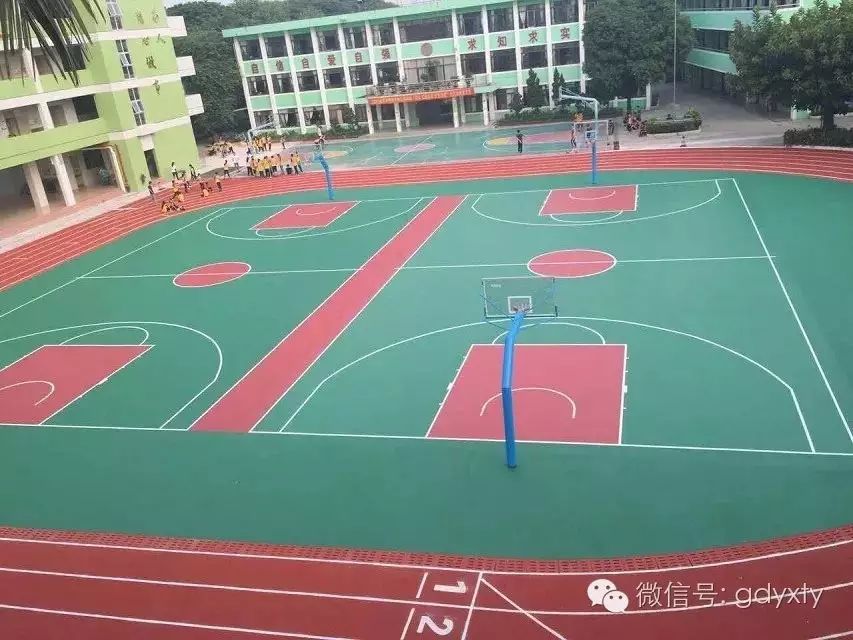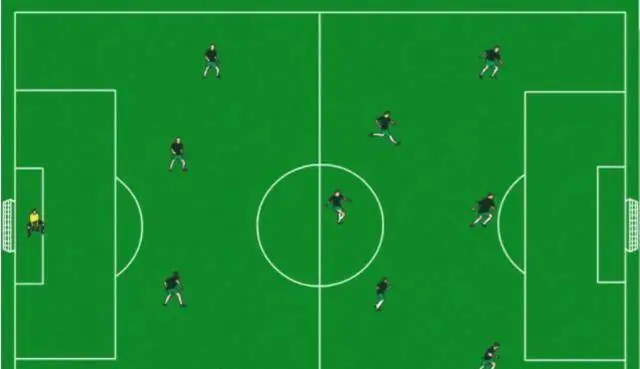
最近,由教育部正式发布了新修订的“有关中小学学生学术登记的法规”。


为了进一步标准化小学和中学生的学术记录管理,改善了学术记录管理的标准化,科学和数字化,并保护适当年龄的儿童和青少年接受教育的权利,教育部已修订“对中小学生的学术记录管理的措施”(以下简称“措施”)。最近,新修订的“措施”正式发布。这些措施分为五章和30篇文章:一般规定,学生注册和更新,学生注册变更管理,担保措施和附录规定。
这些措施遵循合法性,实用性,连续性和科学性的基本原则,充分响应了新时代基础教育改革和高质量发展提出的新的学生身份管理要求,并充分考虑了学生身份管理的可行性并使用当前的学生身份完全考虑学生身份管理的可行性,以充分考虑当前的学生身份。管理层面临的需求以及需要解决的问题反映在最大程度上的修订措施草案中。
这些措施进行了六次修订。首先,阐明了学术记录,学术记录信息,学术记录管理和学术记录档案的定义,并且明确分配了学术记录,学术记录管理和学术记录档案的类型。其次,进一步阐明了州,省,城市,县和学校的学生注册管理部门的权力和责任,并且对学生注册管理权进行了合理的调整,当地学生注册管理部门具有相应的独立管理权。第三个是优化信息系统体系结构,澄清国家学生状况系统采用第一级部署和五级应用模型,并合理地定位和区分国家学生状况系统的功能和当地的学生状态系统。第四,我们将解决学术记录管理的重大问题,强调教育平等,并进一步完善并标准化学术记录变化的条件,例如跨境转移和省级转移。第五,满足特殊学术记录管理的需求,并为特殊教育学生,特殊学校学生,海外学生以及高中职业和通识教育项目的学生提供有关学生身份管理的规定,为促进基本相关改革提供了支持教育。第六,优化学生注册申请服务和人文护理,并明确规定学生教育数字身份,移动教育的学生注册管理以及减少对人民的证书和便利性的规定。
此外,这些措施还提出了对学生注册管理的安全系统以及学生注册数据信息的安全要求,以确保学生注册数据和学生信息的安全性。
这些措施的全文如下 -
管理中小学生学术记录的措施
第1章一般规定
第1条为了进一步标准化小学和中学生的学术记录管理,改善了学术记录管理的标准化,科学和数字化,建立高质量的学术记录管理系统,并保护适当的儿童和青少年的权利根据中华人民共和国的教育法和“中华人民共和国的入学法”以及“中华人民共和国的义务”,应接受教育的年龄。教育法。
第2条在这些措施中提到的小学和中学生是指在小学,初中,普通高中,特殊教育学校和由政府,企业,机构,社会团体,其他社会组织的特殊学校学习的学生组织和个人公民符合法律。
第3条学术地位是在学校学习的学生的身份。所有按照法律法规在学校学习的学生都必须建立学生身份。学术状况信息包括基本的学术状况信息和非基础学术状况信息。基本的学生身份信息由国务院教育行政部统一确定,主要包括学生的居民身份信息,学生的学校身份信息和其他必要的信息。非基础学生地位信息应由省级教育行政部门统一确定,并提交给州议会教育行政部门提交申请。
第4条:学术记录管理是根据相关法规对学生入学资格,学校学习状况和毕业资格的记录,验证和处理。学生状态管理包括两种方法:传统媒体管理和数字管理。学生状态管理主要是数字管理,并且可以在特殊情况下使用传统媒体管理。
第5条学术记录的管理应实施省级协调,等级责任和学校实施的管理系统。
州议会的教育行政部门将在各个地方的学生的学生身份管理工作中进行宏观实现,负责组织和改善国家小学和中学学生学术记录信息管理系统(以下简称国家学术,称为国家学术记录系统)并促进学生状况管理的移动终端的构建。负责各省(自治区域和市政当局)的小学和中学生非基础学生地位信息的互连,并监督,检查和协调跨境招生。
省级教育行政部门应协调其行政区域内的学生身份管理工作,制定其省的学生身份管理的实施规则(自治区域,市政当局),并根据学生身份管理业务,基于学生状态信息数据库省(自治地区,市政当局)。指南,监督和检查其行政区域内各个地方和学校的学生的学生身份管理,并负责直接在其管辖范围内的学校的学生身份管理。
市政教育行政部门负责指导和敦促县级教育行政部门认真地实施有关学生记录管理的州和省的各种法规和要求,并负责学生记录管理学校直接受到控制。
县级教育行政部门专门负责管理其行政区域中学校学生身份的管理,并指导并敦促学校在学生身份的日常管理方面做得很好。
学校负责收集,汇总,验证和报告学生记录信息,并迅速处理各种学生记录业务,以确保信息真实,准确和完整。与卓越的学生身份管理部门合作,在学生身份管理方面做得很好,并指导并帮助父母查看和更新学生状态信息。
学生的基本学术记录信息的收集和管理是通过国家学术记录系统进行的,每个省(自治区,市政当局)管理和维护了非基础学术记录信息。各级教育行政部门和学校应负责收集和托管的学生注册信息的数据安全。
第2章学生的建立和更新
第6条学生首次完成注册程序后,学校应使用其有效的ID文件收集并输入学生状态信息,并在2个月内建立学生状态文件。
学术记录存档的内容包括学术记录信息和相关材料,包括电子文件和纸质文件。原则上,除非另有说明,否则不会建立新的纸学生记录文件。如果确实需要纸质学术记录,则学生注册管理员可以根据电子文件格式打印相关的纸质材料,用户部门可以正确保留它们。
第7条学校应在学生报告到每个学期开始并转移到学校后立即更新其学生记录文件。正常升级的基本学生状态信息将由国家学术状况系统自动更新。原则上,学校将在1个月内进行更改,转移或其他更改的学生的基本学术记录信息。
第8条根据相关规则,由国家学生注册系统自动生成和分发学生注册号。一个人,一个数字将一生保持不变。
第9条学校不得使用虚假信息来确定学生的学生身份,也不应反复建立学生身份。卓越的学生身份管理部门和学校应及时验证学生的学生身份信息和过程,并解决问题的学生身份。
第10条外国学生(包括香港,澳门,台湾,外国学生)或中国居民的外国儿童,他们获得了当地录取资格,应送往他们收到的有效ID文件的学校,以注册信息,申请入学并注册学术地位。
在高中的中期合作教育项目中为学生注册的学生应由市政教育行政部门确认,省教育行政部门应负责监督其学术状况。
如果有特殊情况,学校或县级教育行政部门应向市政级教育行政部门解释情况并处理。
六岁以上的第11条儿童应被送往学校接受和完成义务教育;在不满足条件的地区的儿童可能会推迟到七岁。对于需要延迟入学率的学龄儿童(以下称为延迟入学率),应向他们在延迟注册程序之前对其进行审查和批准的教育行政部门发出相关材料。延迟学期的期限通常是一个学年。如果您在延迟学期后不能上学,则应再次申请,延迟学历的学生将被暂时暂停。
对于进入专业学校的学生,他们的学术地位将保留在原始学校中。如果学生从专业学校返回原始学校继续接受通识教育,则该学校及其主管教育行政部门将确定相应的年级并及时更新学生的身份。
对于需要上课并在普通学校提供家门服务的特殊教育学生,他们应签发县级或以上医院发行的残疾证书或相关材料以及相关的评估单位,以澄清其特殊学生的身份。学校将根据残疾类别和水平对它们进行分类和管理。 ,提供特殊教育和帮助。
对于严重残疾并且无法上学的特殊儿童,由当地教育行政部门协调的学校应根据法律入学年龄注册其学校,并提供挨家挨户的教学服务。
第三章学校注册变更管理
第十二条学术记录的管理应实施“一个人,一个公民和注册遵循该系统的系统”。每个阶段的学术记录变化的具体条件和要求应由省级教育行政部门根据国家法律和法规以及当地的实际条件制定。

如果学校合并,学生状态文件将被转移到合并的学校管理层。
如果学校撤销了学生状态文件,则学生状态文件将被转移到主管教育行政部门或其指定的管理部门。
第13条根据学生状态信息类别,应及时在国家学术状态系统中及时更新学生状态信息的变化。学生状态管理部门应迅速批准学生状态更改信息。
如果学生的父母或其他法定监护人通过移动终端在国家学生状况系统中更新学生的基本学生状态信息,则学校应审查并确认信息更改。如有必要,他们必须向高级学生身份管理部门报告批准,并将相关材料包括在学生状态文件中。
第14条在学生上学时,所有各方应根据入学政策,入学计划和学生的实际注册状态来完成国家学术状况体系中学生身份的转移。进入学校时,您应该及时收到学生记录文件,并根据需要进行补充并更新文件内容。
适度地放宽改变特殊教育学生学术地位的权力,他们所在的学校将委托一个专家委员会来进行残疾人进行评估。根据评估结果,确定学生是否将升级学习,毕业或上学。如果情况是特殊的,则可以降级并处于学术状态系统中。完成注册,并将其提交给高级学生注册管理部门批准。
第15条当学生转移时,转学学校应通过国家学生登记系统启动转移程序,而转学学校和两所学校的高级学生注册管理部门应验证转移。学校往返学校和两所学校的高级学生登记管理部门,应分别在10个工作日内完成学生注册转移的验证。学校的转移必须保留电子学生记录文件备份,并保留纸质学生记录文件的必要副本。纸质学术记录文件副本的管理的具体措施应由省教育行政部门提出。
进一步简化跨省转移材料,并实现跨境转移的“一站式服务”。
改善学生父母或其他法定监护人检查学生身份状况并通过移动终端转移进度的机制。
第16条:学生的休假应由其父母或其他法定监护人申请,学校应在确认后向高级学生注册管理部门提交申请。当学校恢复时,学校应及时处理相关程序。申请休假的期限不得超过1年。如果您确实需要在学期结束后继续离开缺席,则应申请新申请。
在学生离开的期间,学校应保留其学生身份,恢复学校的具体方法应由省教育行政部门提出。
第17条县级教育行政部门和学校必须根据辍学控制和学校担保工作的要求进行问题调查,并劝阻学校的回报,并遵循基于国家标记的问题线索的辍学控制和学校担保工作的要求学生注册系统或相关部门的反馈,并动态跟踪和处理辍学控制和学校保证工作。帐户。
在强制性教育阶段的第18条学生将不允许退出学校。如果普通的高中生辍学,他的父母或其他法定监护人将申请。学校确认这一点后,它将报告给高级学生登记管理部门提交文件。取消学生身份的具体措施应由省教育行政部门提出。
学生毕业,毕业或辍学后,他们必须将相关信息记录保留在国家学术记录系统中。学校的教育行政部门负责为学生提供相应的证书。省级教育行政部门应制定计划,以逐步促进电子证书的使用,这些证书可以与纸质证书同时使用并具有相同的效果。
第20条如果学生出国学习,他将前往他的学生注册所在的学校,并带有有效的文件,以通过相关程序,学校将学生注册文件转移到高级学生注册管理部门。如果您在返回该国后仍需要接受基础教育,则应根据相应的研究记录进入相应的成绩。接受学生的具体方法由省教育行政部门制定。学校应跟进学生记录文件,并在学生记录信息中标记学生的倒台学习经验。
第21条如果学生去世,则该学校应申请学生死亡的高级学生注册管理部门,学校应申请相关材料,以在60次工作中通过国家学生注册系统取消其学生注册天。
第4章担保措施
第22条当地教育行政部门和学校应不断加强学生身份管理机制的建设,为学生身份管理提供必要的保证条件,并根据需要为学生身份管理员配置。学生注册管理员将优先考虑和招聘人员具有强烈的责任感和强大的信息技术能力。中央学校可以进行教学要点的学术记录管理。
地方教育行政部门应为学生注册管理人员建立注册系统。学校和教育行政部门的基本信息必须提交给高级教育行政部门进行申请,并将在国家学术系统中及时注册和更新。
所有地区都应根据实际条件合理地确定学生注册经理的工作量,并将其包括在绩效薪金分配计划中。在相同的条件下,应优先考虑学生注册经理的专业标题评估,评估和促进,并采取积极而有效的措施,以确保学生注册管理团队。稳定。
地方教育行政部门负责加强学生登记管理团队的专业建设,并指导管辖范围内的部门定期进行学生注册管理培训。学生登记管理员应首先严格实施培训系统,然后再执行该职位。
第23条国家学生登记系统采用集中的建筑部署,并在中央,省,市政,县和学校的五个层面上采用了申请模型。国务院教育行政部门负责加强国家学生注册系统的功能设计和用户经验的改进,从而在整个周期和过程中收集和管理学生注册数据的技术保证,并及时监督学生注册异常。所有地区都有在其地区管理和使用学生数据的权利。
当地教育行政部门需要建立学生注册安全管理的预警机制。
第24条所有地方教育行政部门和学校必须为学生注册管理建立严格的安全系统。定期更改学生注册管理系统的帐户密码,并没有使用超过半年的帐户来密封它们。各级管理人员应严格遵守数据使用规则,并严格防止学生记录数据泄漏。
除非法律和法规另有明确规定或在县一级或以上人民政府批准的情况下,否则不得向外界提供学生身份信息。提供给外界的学生身份信息应根据法律脱敏或匿名。获得使用批准后,应根据法律在申请范围内使用学生状态信息,并严格防止滥用学生身份信息。如果造成信息泄漏和非法使用,则将根据法律“批准谁和谁负责的人”的原则来处理所涉及的相关人员。
根据学生的基本学生身份信息,促进“受信任的教育数字身份”的构建和应用,实现可信赖的识别和安全共享不同应用程序之间的学生教育身份信息,严格阻止其他应用程序违反其他应用程序系统收集学生信息法规,严格防止学生状态数据通过其他应用程序系统泄漏。
第25条学校应每学期至少批准一次学生的学术状况,以确保学生身份保持一致,改变学术状况的程序是完整的,并且学生的基本学生身份信息和学生身份变更信息准确。认真并迅速处理诸如分离人和检查期间空无一人的学生身份等问题。
第26条如果教育行政部违反了这些措施的规定,则高等教育部门应下令更正;如果情况很严重,则直接负责的主管和其他直接负责的人应根据法律处理。
如果学校违反了这些措施的规定并遇到以下任何情况,则负责教育行政部门应命令其纠正局势;如果情况很严重,则应根据法律承担责任,校长,学校合法人员和相关人员应对:首先,未建立学生注册档案以符合学生的认可。 ; 2。使用虚假信息建立学生状态或学生状态文件; 3。不将学生状态的变化包括在学生状态文件中; 4。未能报告学生在义务教育中辍学的学生; 5。无法处理接受合规学生的学生的转学程序; 6。不是要根据需要将学生记录文件转移给学生; 7。使用学生记录信息正在泄漏或非法泄漏; 8。这是在学生记录管理中引起的严重问题,除了上述行为; 9。其他行为违反了这些措施的规定。
第5章附件
第27条:在香港和澳门举行的海外中国学校和大陆课程学校应注册学生的学术记录,国家学术记录系统应分别管理学生地位信息,并应分别制定学术记录管理条例。
第28条如果高中学校持有职业和通识教育项目,则应根据该省(自治区,市政当局)的有关职业和通用教育的相关法规进行学生登记管理。
第29条省教育行政部门应根据这些措施制定和改善实施规则。
第30条该措施应在出版之日生效。 2013年8月11日发布的“关于小学和中学生的学术登记管理法规”(Jiaojiyi [2013]第7号)将同时废除。
教育部基础教育部负责人回答了记者关于与措施有关的问题的问题。
问:措施修订的背景是什么?
答案:2013年,教育部发布了“措施”,该措施清楚地规定了小学和中学生的学术记录的管理“一个人,一个注册和注册,并遵循了该人的身份”,并实施了一个管理系统分层责任,省级协调,地方管理和学校实施,并采用了基于信息的方法。建立一个全国性的统一和标准化的学生注册信息系统和管理系统。 2014年,教育部为小学和中学生建立了国家学术注册信息管理系统(以下称为“学校注册系统”),并在全国范围内在线运营。措施的实施和学生身份系统的建立进一步标准化了学生地位管理,进一步提高了基础教育的总体管理水平和治理能力,并进一步促进和保证了教育公平。随着对规范性学术记录管理的需求不断增加以及学术记录信息的深入应用,该措施的某些内容不再符合学术记录管理的实践。建立强大的教育国家,高质量教育体系的建设,国家教育数字战略的实施以及促进教育治理体系和治理能力的现代化的战略目标的提议,也提出了对小学和中学生的学历管理的新和更高要求。学生身份管理面临许多挑战,并且急需改进。

问:修订这些措施的想法和原则是什么?
答案:这些措施的修订必须通过在新时代的基础教育和高质量发展的改革,有效地解决了学生身份管理所面临的一些实际困难和问题,以及对学生身份的高质量发展的改革,对学生身份管理的新要求充分响应。目前的情况将是学术资格管理所面临的需求以及需要解决的问题的基础,这将在最大程度上反映为措施的修订草案。这些措施严格遵循结合法律逻辑,现实逻辑和发展逻辑的要求,并有效地改善了措施的科学,规范性,相关性和有效性。
措施修订的原则:首先,合法性的原则。学生注册管理要求严格遵守相关的法律法规,例如信息收集法,机密法,次要保护法,数据安全法等。针对学生信息收集和使用的法规必须遵守相关的国家法律。第二个是实用性原则。这些措施的修订遵循了面向问题的方法,解决了当前的学术记录管理中的突出矛盾,更好地满足了学术记录管理的需求,降低了学术记录管理的成本,并建立了良好的学术记录管理令。同时,请确保教育行政部门和学校提供实用可靠的政策指南,并为教育决策提供可靠的数据基础。第三是连续性的原则。 The Measures (2013) play an important role in standardizing student registration management and protecting the right of children and adolescents to receive education. Many clauses and contents are still of application significance and value for standardizing student status management, so they are retained during the revision process to ensure the stability and continuity of student status management policies. Fourth, the principle of scientificity. In view of the reality that the requirements for student status management in different places are different, the Measures not only clarify the basic principles of student status management, but also leave enough room for local governments to issue specific implementation rules according to local conditions. At the same time, we will make full use of informatization, digitalization and intelligent technical means to effectively improve the efficiency of student registration management and comprehensively improve the scientific level of student registration management.
Q: What adjustments does the Measures make to the definition of academic status?
Answer: The Measures clarify the definitions of academic records, academic record information, academic record management, and academic record files, and divide academic record information, academic record management, and academic record files into types. If Article 3 stipulates that academic status is the identity of a student studying in a school, all students who study in a school in accordance with the law and regulations must establish academic status; academic status information includes basic academic status information and non-basic academic status information. Article 4 stipulates that academic record management is the recording, verification and processing of students' admission qualifications, school learning status and graduation qualifications in accordance with relevant regulations, including two methods: traditional media management and digital management. Article 6 stipulates that the content of academic record archives includes academic record information and related materials, including electronic file and paper file.
Q: What adjustments have been made to the student status management rights of student status management departments at all levels?
Answer: The Measures further clarifies the powers and responsibilities of student registration management departments at all levels of the state, province, city, county and school, reasonably adjusts the student registration management rights, and grants local student registration management departments corresponding independent management rights. For example, Article 5 clearly states that the State Council's education administrative department will macro-guid the student status management work of students in various places, be responsible for organizing the construction and improving the national student status system and promoting the construction of the mobile terminal of student status management; provincial education administrative departments will coordinate the student status management work of students within their administrative regions and formulate the province (district, municipal) student record management implementation rules, and carry out relevant student record management business based on the provincial student record information database.
The Measures divide the national student registration management system into two levels: national and local levels, clarifying that the national student registration system adopts first-level deployment and five-level application models, and reasonably position and distinguish the functions of the national student registration system and local student registration system, giving local Legality status of the academic record system. For example, Article 5 stipulates that the collection and management of students' basic academic record information is carried out through the national academic record system, and non-basic academic record information is managed and maintained by each province; education administrative departments and schools at all levels should be responsible for the data security of the collected and managed academic record information. Article 23 stipulates that the national student registration system adopts centralized construction deployment, and the application model at the five levels of the central, provincial, municipal, county and school.
Q: How to respond to the prominent issues in current academic record management?
Answer: The Measures highlight educational equity, further refined and standardized the conditions for changes in student status such as cross-provincial transfer and provincial transfer, and responded to issues such as empty school registration, separation of personal status, and repeated school registration. If Article 15 stipulates that when a student transfers, the transfer to the school should initiate the transfer procedures through the national student registration system, and the transfer to the school and the academic registration departments of both schools shall verify the transfer. The transfer school and the school registration authorities of both schools shall complete the verification of student registration transfer within 10 working days respectively; the transfer school must reserve the electronic student registration files for backup and retain the necessary paper copies of the file. ; Specific measures for the management of copy copies of paper files shall be formulated by provincial education administrative departments. Article 25 stipulates that schools shall approve student academic records at least once every semester to ensure that the student status is consistent, the student status changes are complete, and the student basic student status information and student status changes are accurate; seriously and promptly handle the separation of personal status, empty student status found during the inspection, etc. question.
Q: What provisions does the Measures make in response to the needs of special academic record management?
Answer: The student status management requirements for special education students, special schools students, overseas students, and high school vocational and general education programs are relatively special. The Measures have made clear provisions on the management of student status for these students, ensuring that they are in line with the needs of national basic education reform. If Article 10 stipulates that overseas students (including Hong Kong, Macao, Taiwan, foreign students) or foreign children of Chinese residents who have obtained local admission qualifications should go to the received school to register with valid ID documents, apply for admission and register for academic status. Article 11 clearly stipulates the management of student status for students in specialized schools and special education students. Article 14 stipulates that students with special education students can be moderately relaxed for changes in their academic status, and those who are not allowed to be demoted to attend school in special circumstances. Article 27 stipulates that overseas Chinese schools and mainland curriculum schools held in Hong Kong and Macao will register their student status for students. The national student status system will separately manage the student status information, and the student status management regulations will be formulated separately. Article 28 stipulates that if high school schools hold general vocational education projects, student registration management shall be carried out in accordance with the relevant regulations on vocational education in the province.
Q: How to reflect the new changes brought by digitalization to student registration management in the Measures?
Answer: On the one hand, it is to optimize student registration application services. The Measures insist on optimizing services and humanistic care, and make clear provisions on digital identity for students' education, mobile terminal construction of student status management, and reducing certificates and convenience for the people. For example, Article 15 stipulates that the materials for cross-provincial transfer are further simplified and the "one-stop service" for cross-provincial transfers are realized. Article 21 stipulates that the cancellation time for students with deceased students will be extended from the original 10 working days to 60 working days. Article 23 stipulates that the education administrative department of the State Council is responsible for strengthening the functional design and user experience improvement of the national student registration system, and providing technical guarantees for collecting and managing student registration data throughout the cycle and throughout the process and timely supervising student registration abnormalities. Article 24 stipulates that the construction and application of "student trusted education digital identity" based on students' basic student status information can be promoted, and the trusted identification and secure sharing of student education identity information can be realized between different application systems.
On the other hand, it emphasizes the security of student registration information management. The Measures put forward clear requirements on the security system for student registration management and the security of student registration data information. For example, Article 23 stipulates that education administrative departments at all levels need to establish an early warning mechanism for student registration safety management. Article 24 stipulates that education administrative departments and schools at all levels must establish strict student registration management security systems; regularly change the account password of the student registration management system and have not used accounts for more than half a year to seal them; managers at all levels should strictly abide by the data usage rules, Strictly prevent student record data from leaking; unless clearly stipulated by laws and regulations or approved by the people's government at or above the county level, no student student record information shall be provided to the outside world; Strictly prevent other application systems from collecting student information in violation of regulations, and strictly prevent student record data from leaking through other application systems.
Q: How to ensure the implementation of the Measures?
Answer: The Measures set up a chapter of "guarantee measures" and made clear provisions on the guarantee conditions for student status management and the construction of the team of student status management personnel.
The Measures propose that education administrative departments and schools at all levels should continuously strengthen the construction of student status management mechanisms, provide necessary guarantee conditions for student status management, and equip student status administrators as needed; local governments should reasonably verify the workload of student status management personnel based on actual conditions and put them in a reasonable manner. If it is included in the performance salary distribution plan, the professional title assessment, evaluation and promotion of academic managers should be given priority under the same conditions; academic managers should strictly implement the system of training first and then taking the post. If the education administrative department violates the provisions of the Measures, the higher education administrative department shall order the correction; if the circumstances are serious, the directly responsible supervisors and other directly responsible persons shall be dealt with in accordance with the law.
·Principal of Liaocheng Dream Factory Art Training Camp
·Well-known robot education teacher in Liaocheng; has been engaged in the education industry for more than ten years
·Teach robot programming and Rubik's Cube classes in major primary and secondary schools and kindergartens in Liaocheng
·The famous resident singer in Liaocheng, with more than ten years of experience in resident singing
· Many times invited to participate in Shandong TV variety shows
· Deputy Secretary-General of Liaocheng Pop Music Professional Committee
·Self-held as a judge of the Liaocheng competition area of "The Voice of China" for five consecutive years
· Founder of Liaocheng Live Football E-sports League
·Liaocheng Changqing Football Club Member

(You can add Teacher Wang Jin's WeChat)
Phone/TEL:
Address/ADD:
China - Shandong - Liaocheng

版权声明:本文内容由互联网用户自发贡献,该文观点仅代表作者本人。本站仅提供信息存储空间服务,不拥有所有权,不承担相关法律责任。如发现本站有涉嫌抄袭侵权/违法违规的内容, 请联系本站,一经查实,本站将立刻删除。如若转载,请注明出处:http://www.yantaibaolong.com/html/tiyuwenda/7409.html










